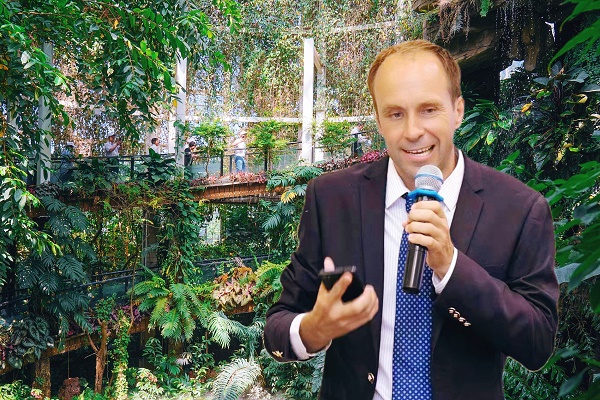
Kyle Warwick Tomlinson. (PHOTO: VCG)
Kyle Warwick Tomlinson, principal investigator of the Community Ecology and Conservation Group at the Xishuangbanna Tropical Botanical Garden (XTBG) in Yunnan province, mainly studies the impact of savannah and forest fragmentation in the province in southwest China. His work has significantly deepened people's understanding of the diversity of Yunnan's savannahs and helped to assess the vegetation types in China's tropical regions.
The XTBG, under the aegis of the Chinese Academy of Sciences, is a comprehensive research institution engaged in biodiversity conservation and sustainable use of plant resources.
Home away from home
Tomlinson, who has done environment-related work all over the world, eventually decided to work at the XTBG because he finds Yunnan an excellent place to conduct research. It has a wide range of weather conditions and soil types, from very nutrient-poor to very nutrient-rich.
The XTBG, with an area of over 1,000 hectares, is one of the most diverse open-air botanical gardens in the world, preserving over 13,000 species of tropical plants. "I was struck by the natural beauty here," Tomlinson said. Yunnan reminds him of South Africa, where he was born and raised, because they're roughly on the same latitude north and south of the equator, and both have big differences in the climate.
Compiling data to save savannahs
Savannahs are ecosystems characterized by a ground layer dominated by grasses and an open canopy of trees that allows direct sunlight to reach the understory. Much of the vegetation of tropical and subtropical Asia is characterized by mosaics of savannah and forest vegetation, including the deciduous monsoonal forests of lowland South and Southeast Asia and the pine and oak forests of upland Asia, Tomlinson told Science and Technology Daily.
Still, there is a long way to go before savannahs can be formally protected and properly managed; for that a larger body of supporting data is needed. This is what his team is working on, focusing on the history and distribution of savannahs, their uniqueness, and their functional diversity to inform more inclusive policy-making that considers Yunnan's forests and savannahs as distinct vegetation types with different management needs.
A growing body of research shows that the Yunnan savannah, a diverse and complex ecosystem, plays a critical role in the global carbon cycle and harbors an immense biocultural heritage. Tomlinson says grasslands and savannahs provide vital ecosystem services: mitigating climate change, acting as water sources, and providing a home for thousands of species of flora and fauna, many of which are found only in small areas.
"My team has been trying to develop an idea of where grasslands are and how diverse they are, because recognizing the key role that savannahs play in the overall ecosystem is important for their conservation," he said.
Yunnan's stellar role in biodiversity protection
As one of the world's biodiversity hotspots, Yunnan has made great efforts to protect its vast wildlife diversity. Boasting all types of ecosystems except oceans and deserts, it is home to more than 2,000 species of vertebrates, accounting for 51.4 percent of the country's total, and over 19,000 species of already known higher plants, accounting for 50.1 percent of the country's total.
"Yunnan is doing a good job in terms of ecological conservation, which is consistent with what is happening all over China," Tomlinson said, adding that Yunnan has always had a solid foundation of biodiversity research.
To restore the habitat of rare species, Yunnan has set aside one-seventh of its territory as nature reserves and approved the establishment of more than 300 nature reserves.
"The XTBG is also deeply involved in promoting conservation not only in Yunnan, but also in other countries along the borders," Tomlinson said, adding that attention is also paid to animal conservation.
In 2017, Tomlinson received the Caiyun Award, the highest honor given by the Yunnan provincial government to foreign experts who have made outstanding contributions to local development.

